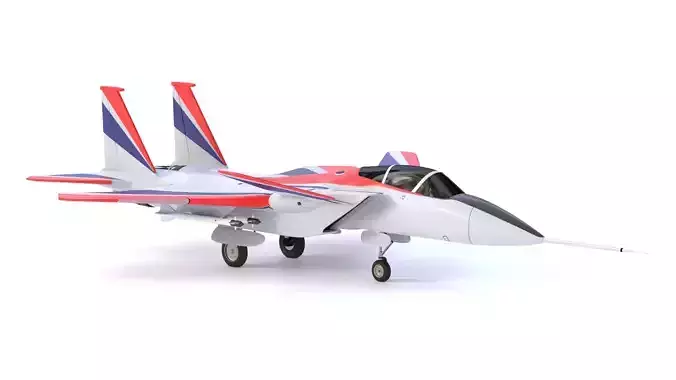1/39
Perfect for use in games and simulation projects.
The F-15 has long been a legendary fighter, but NASA’s ACTIVE program aimed to make it even better. Faced with the looming threat of nuclear war with the Soviet Union, the United States began testing next-generation capabilities before the 10th F-15 even rolled off the assembly line. In the 44 years since the F-15 Eagle first entered service, the air superiority fighter has proven its combat mettle time and time again, racking up an astonishing 104 kills against enemy fighters without ever losing a bout. Today, the twin-engined F-15 remains the fastest fighter in the American stable — with a top speed of Mach 2.5 that eclipses both its super-computing younger sisters, the F-22 and F-35.
There’s no doubt that the F-15 is among the world’s most capable dogfighters, but that doesn’t mean nothing on the aircraft could be improved by throwing a bit more money and research at it–and that’s precisely what NASA chose to do with its Advanced Controls Technology for Integrated Vehicles (ACTIVE) program (among some others). In order to explore new possibilities, the Air Force decided to take a prototype for what would have been the two-seater F-15B and use it as a one-off technology demonstrator in a series of advanced efforts. What resulted was a Frankenstein fighter with a variety of components and systems that managed to make the legendary F-15 even better.
The ACTIVE program introduced cutting-edge technologies to enhance the F-15's performance and capabilities. One significant advancement was the integration of thrust vectoring nozzles, which allowed for unprecedented maneuverability by directing the engine's thrust in different directions. This capability enabled the F-15 to perform maneuvers that were previously impossible, giving it a significant edge in dogfights and other aerial combat scenarios.
Additionally, the program incorporated advanced flight control systems that improved the aircraft's stability and responsiveness. These systems used sophisticated algorithms to optimize the F-15's performance in various flight conditions, making it easier for pilots to control the aircraft during high-stress maneuvers. The ACTIVE program also tested new materials and structural designs to reduce weight and increase the F-15's durability.
The enhancements made under the ACTIVE program demonstrated the potential for extending the service life and combat effectiveness of the F-15. By leveraging innovative technologies and pushing the boundaries of what was possible, NASA and the Air Force ensured that the F-15 remained a formidable force in the skies. The program's success highlighted the importance of continuous investment in research and development to maintain air superiority and adapt to evolving threats.
In summary, NASA's ACTIVE program exemplified how advanced research and technological innovation could elevate an already exceptional aircraft like the F-15 to new heights. By transforming a prototype into a testbed for groundbreaking capabilities, the program not only enhanced the F-15's performance but also set the stage for future advancements in fighter aircraft technology.
Formats include: .OBJ, .FBX, .BLEND. Feel free to check out the other models, just click on the user name to see the complete portfolio.
REVIEWS & COMMENTS
accuracy, and usability.







































